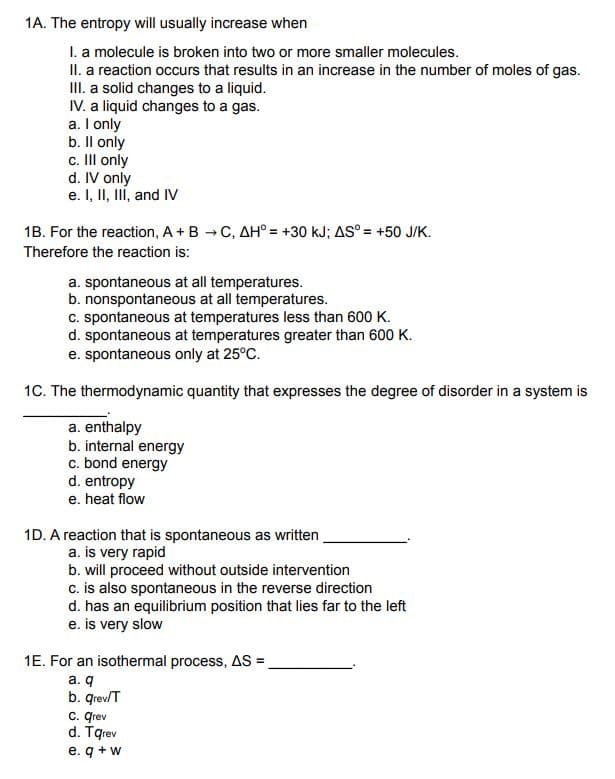1A. The entropy will usually increase when I. a molecule is broken into two or more smaller molecules. II. a reaction occurs that results in an increase in the number of moles of gas. III. a solid changes to a liquid. IV. a liquid changes to a gas. a. I only b. Il only c. II only d. IV only e. I, II, III, and IV 1B. For the reaction, A +B - C, AH° = +30 kJ; AS° = +50 J/K. Therefore the reaction is: a. spontaneous at all temperatures. b. nonspontaneous at all temperatures. C. spontaneous at temperatures less than 600 K. d. spontaneous at temperatures greater than 600 K. e. spontaneous only at 25°C. 1C. The thermodynamic quantity that expresses the degree of disorder in a system is a. enthalpy b. internal energy c. bond energy d. entropy e. heat flow
Catalysis and Enzymatic Reactions
Catalysis is the kind of chemical reaction in which the rate (speed) of a reaction is enhanced by the catalyst which is not consumed during the process of reaction and afterward it is removed when the catalyst is not used to make up the impurity in the product. The enzymatic reaction is the reaction that is catalyzed via enzymes.
Lock And Key Model
The lock-and-key model is used to describe the catalytic enzyme activity, based on the interaction between enzyme and substrate. This model considers the lock as an enzyme and the key as a substrate to explain this model. The concept of how a unique distinct key only can have the access to open a particular lock resembles how the specific substrate can only fit into the particular active site of the enzyme. This is significant in understanding the intermolecular interaction between proteins and plays a vital role in drug interaction.
Among the options, choose the best answer that will suit the question.
Please provide a brief explanation.

Trending now
This is a popular solution!
Step by step
Solved in 5 steps









